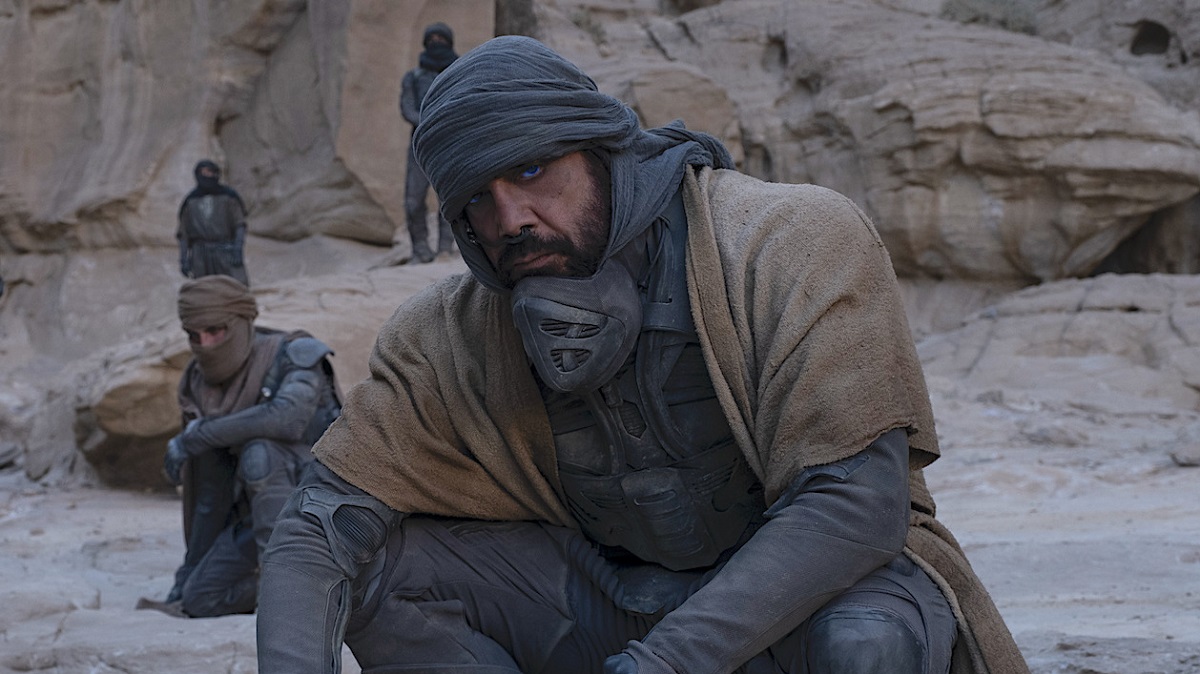Cinematographer Greig Fraser has explained why Denis Villeneuve’s Dune wasn’t filmed using The Mandalorian‘s revolutionary LED technology that can simulate otherworldly computer-generated environments in real-time.
Fraser, who worked on both of the aforementioned titles, said that the decision to shoot Dune in a real desert had to do with both Villeneuve’s desire to bring as much authenticity to the shots as possible and the technology still being developed at the time.
Fraser said they were still filming The Mandalorian as preparation for Dune began concurrently, he told TechRadar.
“We were still trying to work out the bugs in the system,” Fraser said of The Mandalorian’s use of the Industrial Light and Magic creation known as StageCraft, which utilizes massive wraparound LED screens to immerse the cast and production crew inside their CG environments in real-time. He called the Disney Plus show set in the Star Wars Universe “a practice exercise” for the technology.
“[T]he path wasn’t forged yet because The Mandalorian was in the process of forging it. So it wasn’t a possibility, really, and it wasn’t a viable option.”
But besides the LED technology being in an experimental state at the time of Dune’s pre-production, Fraser also said that even if it were an option, he thinks Dune’s director would have probably opted for shooting in a genuine desert at any rate.
“I think Denis wanted this film to be more tactile than we could ever have possibly achieved using LEDs,” he said. Fraser added that this commitment to authenticity involved getting up at 3am every day to shoot in Abu Dhabi in the desert at sunrise, then come back at sunset to shoot another scene.
Fraser said he thinks the difference between the two methods is “that tactility which occurs when you’re really getting sand in your mouth.”
In addition, Dune’s Visual Effects Supervisor Paul Lambert also said they had discussed the use of LED screens, but ultimately decided against it.
“We knew we couldn’t get that harsh intensity of light with an LED screen,” he explained.
Despite Dune opting out of the LED technology, other sci-fi movies have begun using it, such as the 2020 George Clooney film The Midnight Sky.
Don’t think the visual effects are anything to scoff at in Dune, however, as the film reportedly avoided using green or blue screens, as just one example. Production designer Patrice Vermette instead opted for using matte fabric paintings on set, which was later replaced with CG, according to ScreenRant.
This fact alone was a blind-blowing revelation for one fan on Twitter.
In addition, it was announced Tuesday that the Visual Effects Society nominations this year for Best Visual Effects in a Photoreal Feature film included Dune, among others, according to AwardsDaily. The film also leads with six nominations for the awards.
People on Twitter were quick to place their bets that the Frank Hubert-inspired epic would sweep the awards.
Dune comes to digital download on Jan. 17 and Blu-Ray on Jan. 31.







